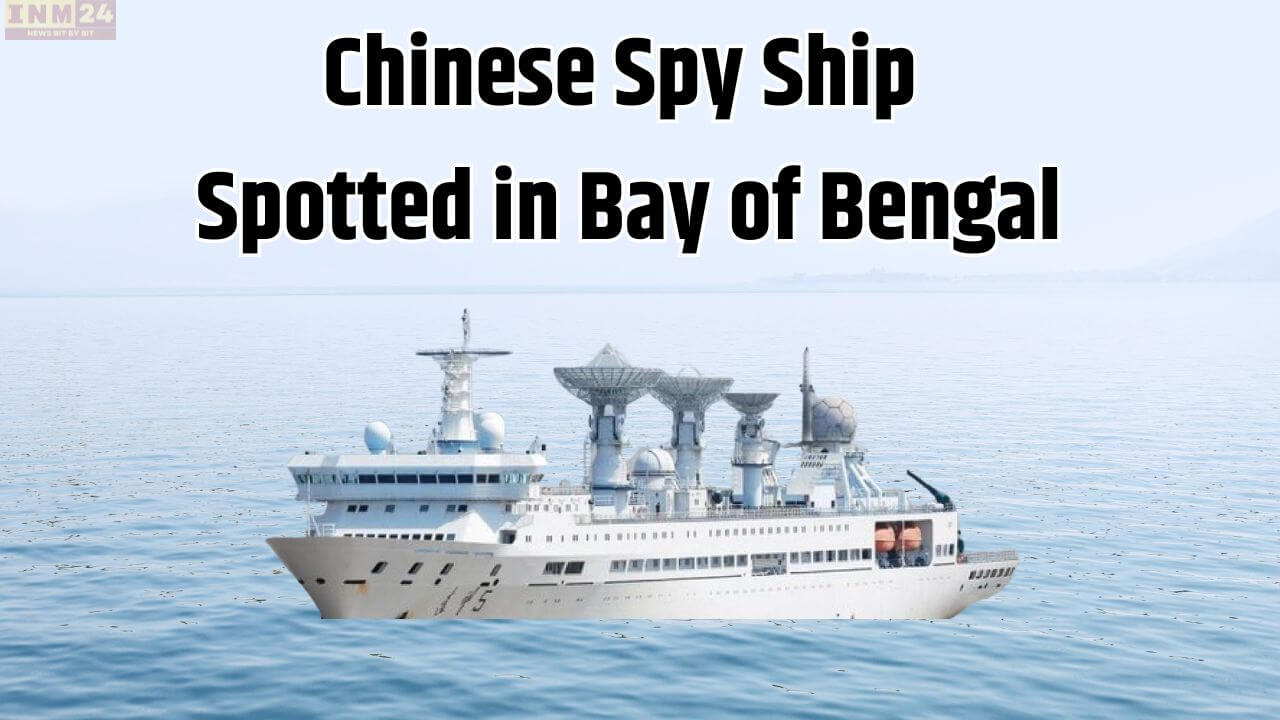In a recent development, a Chinese spy ship has been identified in the Bay of Bengal, raising concerns about potential data theft related to India’s K-4 missile. The spy ship, Jiāng Yáng Hóng 01, known for its expertise in mapping oceanic surfaces, is suspected of being present in the Bay of Bengal to gather information on India’s K-4 missile. There is speculation that India might conduct a test of its K-4 missile today, launched from its nuclear-powered submarine.
Chinese Spy Ship’s Proximity Raises Security Concerns Amid India’s K-4 Missile Test Preparations
The K-4 missile, often referred to as the ‘Beijing Killer,’ is a medium-range ballistic missile designed to be launched from India’s nuclear-powered submarines, specifically the Arihant-class. With a range exceeding 4,000 kilometers, the K-4 is not only capable of conventional strikes but is also equipped for nuclear payloads, making it a formidable deterrent.
The presence of the Chinese spy ship near the potential testing area has prompted heightened security measures, including an area warning issued near the Visakhapatnam port. The Bay of Bengal has become a favored location for Chinese surveillance ships, and their presence has implications for regional security.
It is noteworthy that the Jiāng Yáng Hóng 01 was recently spotted near the international waters close to the Visakhapatnam port and has since moved southeast. The timing of its presence aligns with India’s preparations for the K-4 missile test.
Bay of Bengal Tensions Rise as Indian K-4 Missile Test Faces Scrutiny Amid Chinese Spy Ship’s Surveillance
The Bay of Bengal’s waters are known for their unpredictability, and monitoring submarine activities or potential ballistic missile launches can be challenging. The spy ship’s mission may include tracking Indian submarines or detecting the sound of potential ballistic missile launches.
The K-4 missile, developed by the Defense Research and Development Organisation (DRDO), was initiated to enhance India’s nuclear capabilities and serve as a compact alternative to the Agni-3 missile. The missile has undergone successful tests, including a 2010 underwater test from a submerged platform in the sea.
The K-4 missile possesses a marked capability comparable to the Agni-3 but is 5 meters shorter, making it more suitable for submarine deployment. It weighs up to 2 tons and features a gas-boosted design, utilizing solid rocket boosters for added power.
As the Indian military remains vigilant in safeguarding its strategic assets, the presence of a Chinese spy ship in the Bay of Bengal raises questions about the potential risks associated with sensitive military testing. The international community will be closely monitoring developments in this region as tensions between India and China continue to impact the broader geopolitical landscape. The outcome of the K-4 missile test and the impact of the Chinese spy ship’s activities on regional security remain to be seen.
